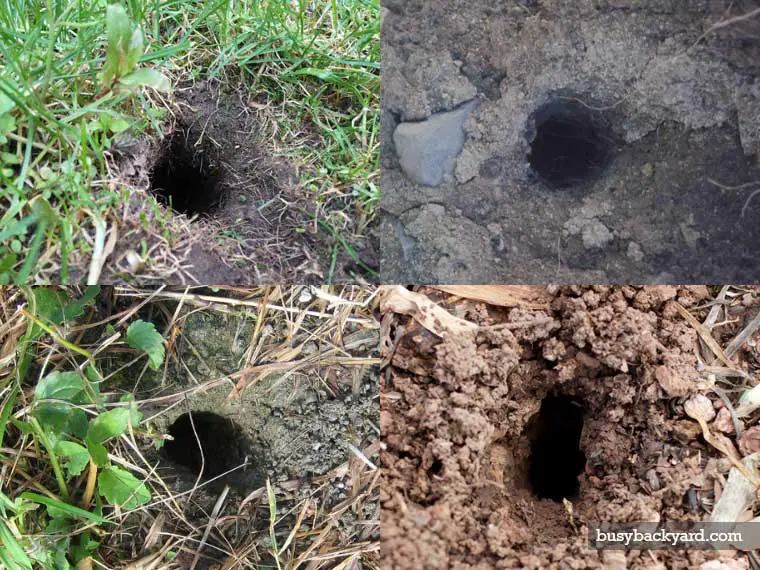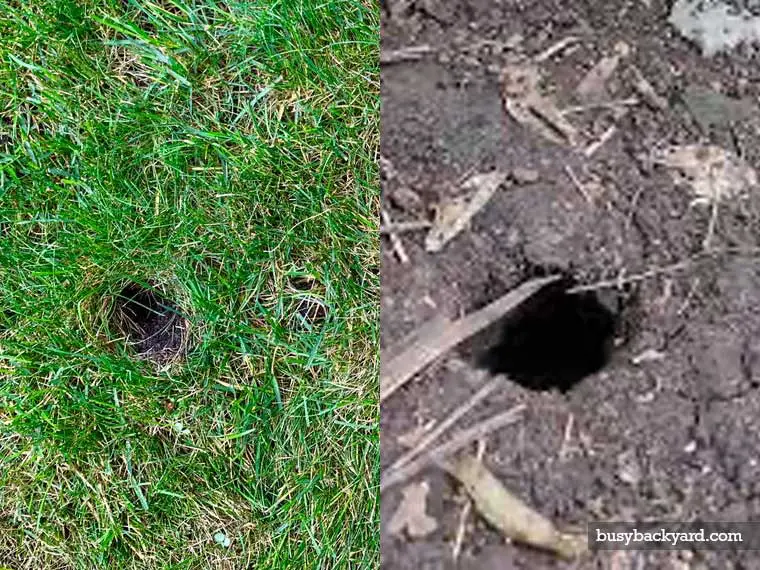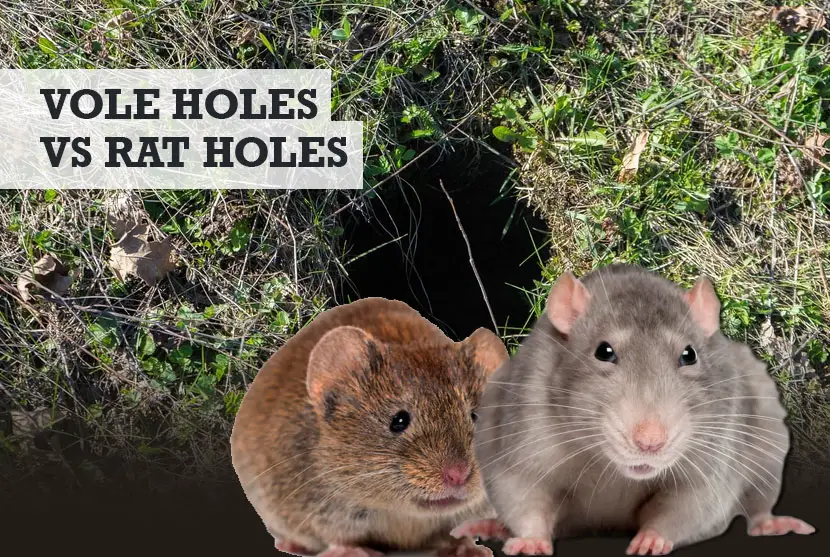When holes appear in your lawn or yard, it’s easy to blame rats. But it could be voles. Both creatures are quite similar, so will often get mistaken for each other, as do the holes that they leave.
This short guide will try to settle the vole holes vs rat holes question for you, so you can hopefully determine who is digging the holes in your backyard.
The difference between rat and vole holes
Vole and rat holes are very similar, but you might notice some very subtle differences.
For example, rat holes can have a fan-shaped collection of soil outside where the rodent has recently been digging. Vole holes tend to be a bit smaller and neater.
Voles will also happily dig holes in the middle of a lawn, and out in the open. Rats tend not to do this, and will dig their holes near to fences, walls, or under the cover of a bush.
What vole holes look like in a backyard

- Vole holes do not have mounds of earth outside them like mole holes do.
- Voles are about the size of a golf ball, and just under 2 inches in diameter.
- They are found on yards and lawns and often around the base of trees.
- You might also notice tracks that about 2 inches wide in the lawn where the voles are travelling between holes.
- Look for gnaw marks near the bottom of trees, bark, or plant stems.
- Look for dead plants that have had their roots eaten.
- Vole tunnels can go as deep as 12 inches into the earth.
What rat holes look like in a backyard

- No large mounds of dirt at the entrance to the hole.
- Rat holes have several entrances.
- Tunnel entrances are 2 to 4 inches in diameter.
- Do not plug or cover the entrances to their holes.
- Like to burrow along fence line and in dense vegetation such as under bushes, near a food and water source, and preferably in sandy soil.
Both voles and rat can be bad for your yard, particularly given the rate at which they can multiply.
Do I have voles or rats?
If the photos I’ve included are still not enough to help you decide whether it’s vole holes vs rat holes, there’s another way you can possibly tell.
It’s by looking at their poop or droppings.
Rat poop is black and will often be found in large groupings that are similar in size to olives. Each poop will be elongated with a sharp end. Rats are prodigious poopers too. They can poop up to 40 droppings a night.
Vole poop can either be green, brown, or even a purple color. They are not slimy like rat poo, but instead have a putty-like texture and no nasty odor. Rat poop can smell like urine.
If all else fails, you need to observe the holes for activity.
Rats are most active at night. If you see one after dark, it’s likely there are more, as they are social animals that live together.
Voles are also active at night, but they do tend to be busier in the dawn and dusk times. They only come out of their holes for 10 minutes or so, but in that period of that time are very busy – making 15 to 20 trips out for food.
Speaking of food, finding out what the critters are eating in your backyard is another way you can solve the vole vs rat holes conundrum.
Vole will strip bark from trees, dig up bulbs, and eat fruit that has fallen from trees. You can read a full list of their typical backyard diet here.
Rats will eat just about anything.
But I’ve not known them to strip bark in my yard, so if you do see that, it will be voles.
Having said that, it’s also possible you could have voles and rats at the same time.
More backyard guides…
The following guides can also help you identify the critter making holes in your yard or lawn, plus how you can get rid of them.

